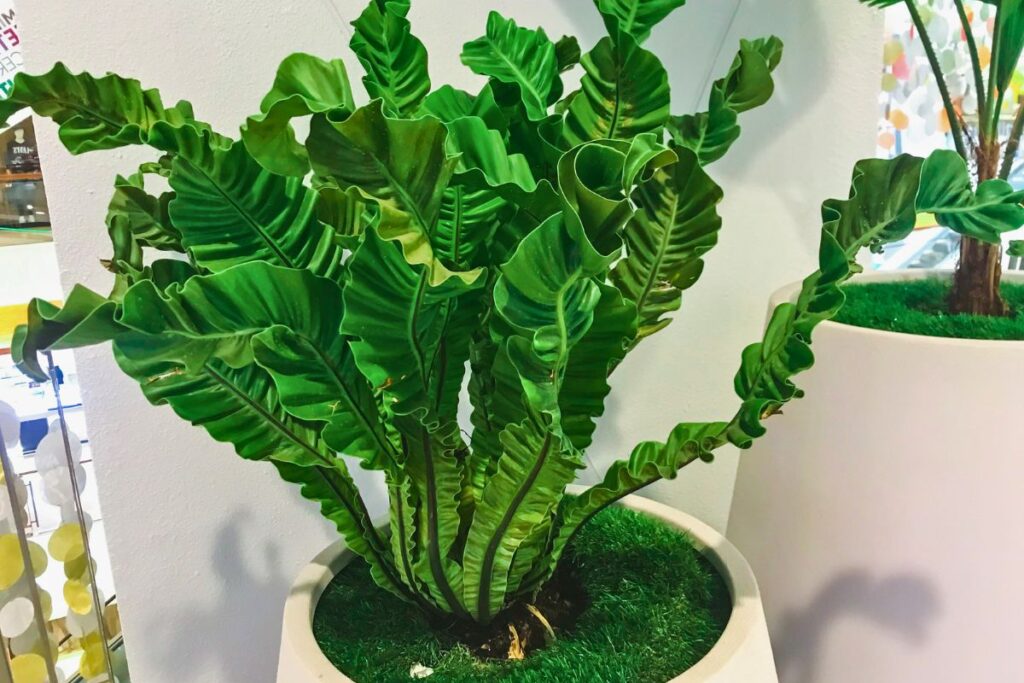Bird’s nest ferns, with their elegant, wavy fronds, are a popular choice for indoor gardeners. These ferns are admired for their unique rosette shape and ability to thrive in low-light conditions, making them a versatile addition to any indoor space. This comprehensive guide will provide you with everything you need to know about indoor care for bird’s nest ferns, ensuring they remain healthy and vibrant all year round.

Contents
Understanding Bird’s Nest Fern
Bird’s nest ferns (Asplenium nidus) are native to tropical regions of Southeast Asia and the Pacific Islands. They are epiphytic plants, meaning they naturally grow on other plants or surfaces, rather than in soil. Bird’s nest ferns are known for their large, glossy fronds that emerge from a central rosette, resembling a bird’s nest. The fronds can grow up to 2-3 feet long, adding a dramatic touch to your indoor garden.
Light Requirements
Bird’s nest ferns thrive in low to medium indirect light. They can tolerate low light conditions but prefer bright, indirect light for optimal growth. Avoid direct sunlight, as it can scorch their delicate fronds. Place your bird’s nest fern near a north or east-facing window, or in a spot with filtered light. If natural light is insufficient, you can use artificial grow lights to provide the necessary light.
Watering Routine
Proper watering is crucial for the health of bird’s nest ferns. These ferns prefer consistently moist soil but are sensitive to overwatering. Use a well-draining soil mix and a pot with drainage holes to prevent water from sitting at the bottom. Water your bird’s nest fern thoroughly when the top inch of soil feels dry to the touch. Reduce watering during the winter months when the plant’s growth slows down. Avoid getting water in the central rosette, as this can lead to rot.
Humidity and Temperature
Bird’s nest ferns thrive in environments with high humidity, similar to their native tropical habitats. To maintain the necessary humidity levels, you can use a humidifier, place a tray of water near the plant, or mist the fronds regularly. Ideally, humidity levels should be around 60-80%.
When it comes to temperature, bird’s nest ferns prefer a warm environment. They thrive in temperatures between 60-80°F (15-27°C). Avoid placing your fern near drafts, air conditioners, or heaters, as sudden temperature changes can stress the plant.
Soil and Fertilization
Bird’s nest ferns prefer a well-draining, organic-rich soil mix. A combination of peat moss, perlite, and pine bark works well. This mix ensures good aeration and prevents the soil from becoming waterlogged. It’s also a good idea to repot your fern every 2-3 years to refresh the soil and provide more space for root growth.
Fertilize your bird’s nest fern during the growing season (spring and summer) with a balanced liquid fertilizer diluted to half strength. Fertilize once a month to promote healthy growth. Avoid fertilizing during the fall and winter months when the plant’s growth slows down.
Pruning and Grooming
Pruning your bird’s nest fern helps maintain its shape and encourages healthy growth. Remove any dead or yellowing fronds to promote new growth and prevent disease. Gently pinch off the fronds at the base of the plant. Bird’s nest ferns benefit from occasional grooming to maintain their rosette shape and overall vitality.
Propagation
Bird’s nest ferns are typically propagated through spores, but this process can be challenging and time-consuming. For indoor gardeners, the best approach is to purchase a new plant from a nursery. If you’re interested in propagating from spores, follow these steps:
- Collect spores from mature fronds by placing a piece of paper under the frond and gently shaking it.
- Sow the spores on the surface of a moist, sterile growing medium.
- Cover the container with plastic wrap or a clear dome to create a humid environment.
- Place the container in a warm, bright location with indirect light.
- Keep the growing medium moist and wait for the spores to germinate, which can take several weeks to months.
Once the new ferns are large enough to handle, transplant them into individual pots and care for them as you would mature bird’s nest ferns.
Common Problems and Solutions
Yellow Fronds
Yellow fronds can be a sign of overwatering, underwatering, or a nutrient deficiency. Check the soil moisture and adjust your watering routine accordingly. If the problem persists, consider fertilizing your fern to provide the necessary nutrients.
Brown Tips
Brown tips on the fronds can indicate low humidity or exposure to direct sunlight. Increase the humidity around your fern and move it to a spot with indirect light to prevent further browning.
Pests
Common pests that affect bird’s nest ferns include mealybugs, spider mites, and scale insects. Regularly inspect your fern and treat any infestations with insecticidal soap or neem oil. Isolate affected plants to prevent the pests from spreading to other houseplants.
Conclusion
Bird’s nest ferns are a beautiful and unique addition to any indoor garden, offering lush greenery and a distinctive rosette shape. By providing the right light, water, humidity, and care, you can ensure your bird’s nest fern thrives and remains healthy. With a bit of attention and patience, you’ll be rewarded with a stunning and vibrant fern that will bring a touch of the tropics to your home.
